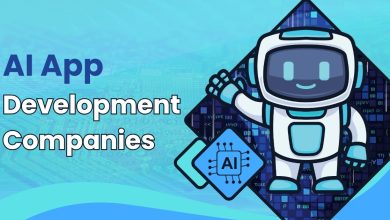
Picture this: A roofing contractor receives a call at 2 AM about storm damage. Instead of going to voicemail, an AI assistant answers immediately, assesses the urgency, schedules an emergency inspection, and sends the homeowner photos of typical storm damage to compare. Three days later, when that homeowner texts asking about insurance documentation, the AI remembers everything—the call, the damage description, even the homeowner’s preferred morning appointment times.
It responds instantly with the exact documents needed, never asking the customer to repeat information. This isn’t the future. It’s happening right now, and it’s revolutionizing how businesses operate across every industry. Companies using these AI systems report saving up to 3 hours daily per employee while delivering customer experiences that were impossible just two years ago.
Why Your Business Needs to Be Where AI Looks First
“Most business owners don’t realize they’re already invisible to millions of potential customers,” says Brian Hong, founder of Infintech Designs, who recently presented on this topic to a mastermind group of entrepreneurs. When someone asks ChatGPT, Perplexity, or Google’s AI Overview for a recommendation, these systems don’t browse websites like humans do. They’ve already read and analyzed millions of pages, forming opinions about which businesses to recommend. If your business isn’t optimized for how AI systems think and search, you’re missing out on an exploding number of potential customers.
Consider this: Nearly 60% of Google searches end without a click to any website. When someone searches “best personal injury lawyer near me,” Google’s AI provides complete answers, often recommending specific firms without showing traditional search results. According to Google’s own data, businesses that appear in AI responses receive “higher quality clicks” from users who are more engaged and less likely to immediately leave the site.
The good news? While competitors waste time on outdated SEO tactics, you can position your business exactly where AI systems look first. The key is understanding that AI doesn’t care about keyword stuffing or link schemes—it cares about genuine expertise, clear communication, and proven results.
The Magic of Unified Context: One Conversation Across Every Channel
Traditional customer service is broken. Customers call, explain their problem, get transferred, explain again, receive an email asking for the same information, then get a text from someone who knows nothing about their situation. It’s frustrating for customers and expensive for businesses.
Modern conversational AI completely eliminates this problem through something called a unified context window. “Think of it as having one incredibly smart employee who remembers every conversation with every customer, never forgets a detail, and is available 24/7 on every communication channel simultaneously,” explains Hong, whose team at Infintech Designs has implemented these systems across multiple industries.
When Mrs. Johnson calls your HVAC company about her broken air conditioner, then texts two days later with a photo of her unit’s model number, the AI knows exactly who she is and what she needs. When she emails a week later asking about financing options, the AI already knows her system’s age, her service history, and her preferred payment methods from your CRM.
This unified context window means the AI maintains the entire conversation history across phone calls, texts, emails, Facebook Messenger, Instagram DMs, and any other channel. It’s like having the world’s best customer service rep who never sleeps, never forgets, and can handle unlimited conversations simultaneously.
Real Examples That Will Blow Your Mind
Let me show you exactly what this looks like in different industries, using real scenarios happening right now.
Home Services Magic
A landscaping company in Phoenix uses conversational AI to handle everything from initial inquiries to project completion. When a homeowner sends a Facebook message asking about xeriscaping, the AI immediately provides accurate quotes based on satellite imagery of their property. It schedules consultations, sends text reminders, and even processes photos of completed work to generate invoices.
After project completion, it automatically follows up for reviews and schedules seasonal maintenance. The owner reports handling 3x more projects with the same size crew. Home services companies using AI are seeing similar dramatic improvements in efficiency and customer satisfaction.
Healthcare That Actually Cares
A medical spa in Miami revolutionized patient care with conversational AI. When patients call about Botox treatments, the AI accesses their treatment history and reminds them it’s been exactly 3 months since their last appointment—perfect timing for a touch-up. It sends pre-appointment instructions via text, processes before-and-after photos to track results, and automatically calls patients 24 hours post-treatment to check for any concerns.
If a patient texts a photo of unusual swelling, the AI immediately recognizes the concern and schedules an urgent follow-up. Result? Healthcare facilities using AI clinical decision support have achieved 25% reductions in readmission rates and 40% increase in patient retention. Healthcare practices implementing similar AI systems are transforming patient engagement and outcomes.
Legal Firms Working Smarter
A personal injury firm in Chicago uses AI to transform initial client intake. When accident victims call, the AI conducts comprehensive interviews, gathering all necessary information about the incident, injuries, and insurance details. It immediately texts clients a list of documents to collect, sends secure upload links for photos of injuries and damage, and even analyzes medical records to identify all billable treatments.
The AI maintains communication throughout the case, sending updates about court dates and settlement negotiations. The firm now handles 60% more cases with the same number of attorneys. Legal AI adoption is accelerating across all practice areas.
The Secret Sauce: How This AI Actually Works
Unlike chatbots that frustrate customers with scripted responses, modern conversational AI uses what Brian Hong calls “intelligent context awareness.” Here’s what makes it special, explained simply.
First, it connects to your existing CRM and pulls in everything about each customer—their purchase history, preferences, past conversations, even their birthday. When John calls your plumbing company, the AI already knows he owns a 15-year-old water heater, prefers morning appointments, and always asks about senior discounts.
Second, it maintains conversation continuity across all channels. Start a conversation on the phone, continue it via text, finish it through email—the AI remembers everything. It’s like talking to the same helpful person every time, except this person is available 24/7 and never has a bad day.
Third, it learns and improves continuously. Every conversation teaches it something new about your business, your customers, and what works best. It identifies patterns humans miss, like noticing that customers who ask about warranties are 3x more likely to purchase extended service plans. Companies working with specialized AI automation services often see ROI within the first month of deployment.
Setting Up Your AI Workforce: Easier Than You Think
Many business owners think implementing conversational AI requires massive technical expertise and disruption. The reality is surprisingly simple. “We’ve seen businesses go from initial consultation to full deployment in under a week,” notes Hong, whose experience implementing these systems has shown that the biggest barrier isn’t technology—it’s mindset.
Start with one specific workflow that’s eating up your team’s time. For most businesses, that’s appointment scheduling or initial customer inquiries. Your AI can handle these tasks immediately while your team focuses on high-value work. Modern platforms designed for AI automation services can be operational within days, not months.
As you see results—usually within the first week—expand to other areas like follow-ups, review requests, and payment reminders. The best part? Your AI employee never calls in sick, never quits after you’ve trained them, and never has a bad attitude with difficult customers. It works holidays, weekends, and the middle of the night with the same enthusiasm as Monday morning.
Becoming Visible to AI Search Engines
While your conversational AI handles customer interactions, you need to ensure AI search engines recommend your business. This requires a completely different approach than traditional SEO, something the team at Infintech Designs discovered through extensive testing across client campaigns.
Create content that directly answers the questions your customers ask. Not keyword-stuffed pages, but genuine, helpful information that establishes you as the expert. When someone asks ChatGPT about roof repair costs in your area, you want to be the business it references because your content thoroughly explains pricing factors, common issues, and what homeowners should expect.
Build your authority through customer success stories and case studies. AI systems love specific examples with real results. Instead of claiming you’re the “best plumber in town,” show how you solved Mrs. Garcia’s complicated repiping project or how you helped ABC Restaurant avoid closure by fixing their grease trap emergency within two hours.
Maintain consistent information across all platforms. Your business name, address, phone number, and services should be identical everywhere online. AI systems cross-reference information from multiple sources, and inconsistencies reduce trust. Research shows that businesses with consistent NAP (Name, Address, Phone) data are 70% more likely to appear in AI recommendations.
The Human Touch in an AI World
Here’s what surprises most people: implementing conversational AI actually makes your business more human, not less. By handling routine tasks, AI frees your team to focus on what humans do best—solving complex problems, building relationships, and delivering exceptional service.
Your receptionist stops answering the same questions 50 times per day and instead becomes a customer success specialist. Your sales team stops chasing cold leads and focuses on high-value opportunities the AI has qualified and warmed up. Your technicians arrive at jobs with complete information, turning frustrated customers into raving fans.
The businesses thriving with AI understand this balance. They use AI to eliminate friction and inefficiency while empowering their human teams to deliver experiences that create customers for life. McKinsey research confirms that companies combining AI with human expertise see 2x better performance than those using either alone.
Your Competitive Advantage Starts Now
The conversational AI market will grow from $12 billion today to $62 billion by 2032. Businesses already using these systems report 2x better performance than competitors. But here’s the real opportunity: most of your competitors don’t understand this technology yet.
“Every week we talk to business owners who think AI is five years away, meanwhile their competitors are already using it to steal their customers,” observes Hong. While they’re still trying to figure out basic chatbots, you can implement sophisticated AI that transforms your entire operation.
Every day you wait is a day customers choose competitors who respond instantly, never forget details, and are always available. It’s a day your team wastes on repetitive tasks instead of growing your business. It’s also a day you remain invisible to the AI search engines increasingly controlling who customers discover.
The businesses that will dominate the next decade aren’t necessarily the biggest or most established. They’re the ones that recognize this transformation and act decisively. They understand that conversational AI isn’t about replacing humans—it’s about amplifying human potential to deliver experiences that seemed impossible just years ago. The revolution isn’t coming. It’s here, it’s accessible, and it’s waiting for you to seize the advantage.


